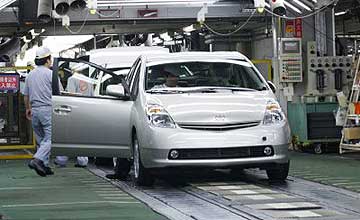In terms of passive safety, the Prius is well fitted out with dual front airbags and force-limiting front seatbelt pretensioners. The i-Tech model gains front seat side airbags and full-length curtain shield airbags. Toyota says Prius has passed a 40 per cent offset deformable barrier test at an impact speed of 64km/h, and has also met the 55km/h European dynamic side impact test. It has been tested in 55km/h full-frontal barrier impacts, and in rollover and rear impact situations. In addition to the usual central safety cell design with progressive impact front and rear sections, it gets new tibia pads on the cabin front footwells, to minimise injury to the lower body. Head impact protection measures include soft upper interior sections on the roof side rails and inner B-pillar. The collapsible steering column has collapsible brackets and an energy absorbing plate. The front seats are designed to protect against whiplash injury. Dynamic safety equipment includes ABS brakes with electronic brake-force distribution and brake assist. The i-Tech version gets an electronic stability control system operating to control under or oversteer, in which individual braking of any of the four wheels, plus steering corrections, help keep the car on the chosen path. Pedestrian safety has also been given attention. Space has been allowed between the bonnet and engine bay components for deformation, while the shape and design of the inner bonnet is designed to minimise pedestrian head impact. The wipers are designed to minimise the chance of injury, while the front bumper has been designed to minimise leg impact.

